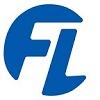STYLING CHARACTERISTICS OF BUSINESS CORRESPONDENCE IN GERMAN & UKRAINIAN LANGUAGES
DOI:
https://doi.org/10.20535/2410-8286.39335Keywords:
business correspondence, structure, types, typical stock phrases and set expressions, grammatical peculiaritiesAbstract
The article compares the structure of business correspondence between German and Ukrainian languages. Business correspondence is instrumental in establishing official, business and partner contacts between government institutions and private companies alike. It is also a major factor in building relationships between individuals. Business correspondence in Germany is defined by German Industry Standards (DIN 5008, 676) and has more requisite elements than it does in Ukraine. The differences lie in the format and placement of the date, the main text of German letter being divided into three parts versus two parts in Ukrainian, the signature in German letter is placed above the name of the author while Ukrainian letter has it across from author's name. Ukrainian business letter does not call for specify its subject before the salutation. Common to both German and Ukrainian business letters is the use of a certain minimum of set expressions and stock phrases predicated upon a limited number of standard aspects of business writing which tend to be highly repetitive (letter of notification, request, proposal, demand, refusal, agreement). Covered herein are main types of German business letters (corporate partnership request letter, inquiry letter, business proposal letter, marketing letter, repeat offer letter, order letter, refusal letter, complaint letter, reminder letter), their characteristic features and typical stock phrases and set expressions. A grammatical analysis shows that business correspondence is marked by prevalence of present tense, more frequent use of active voice over passive, rather frequent occurrence of infinitive constructs with "zu" and imperative mood, rather infrequent occurrence of subordinate clauses - mainly noun, adjective and conditional clauses. Recent times are marked by a substantial reduction in use of subjunctive mood Konjunktiv II.
Downloads
References
- Borisko, N.F. (1995). A Course in Business German. Kiev, Ukraine: Zapovit [in Russian].
- Konovchenko, O.V.(2012). International Correspondence. Kharkiv, Ukraine: «KhAI» [in Ukrainian].
- Cushhinskij, I.I. (2001). Law & Commerce: Russian-German Equivalencies. Moscow, Russia: GIS [in Russian]
- Shevchuk, S.V.(2006). Business Ukrainian. Kyiv, Ukraine: Vyshcha shkola [in Ukrainian].
- Write Letters Well & Correctly! A Guide to Proper Contemporary Correspondence. (2006). Mannheim. Leipzig. Vienna. Zurich: Duden Publishing House, Germany [in German].
- Hering, A. & Matussek, M. (2002). Business Communication. Writing & Telephoning Ismaning: Max Hueber Publishing House, Germany [in German].
- Conlin, C. (1995). Business German. Munich: Klett Publishing House of German, Germany [in German].
Downloads
How to Cite
Issue
Section
License
Copyright (c) 2014 Advanced Education

This work is licensed under a Creative Commons Attribution 4.0 International License.
Authors who publish with this journal agree to the following terms:- Authors retain copyright and grant the journal right of first publication with the work simultaneously licensed under a Creative Commons Attribution License that allows others to share the work with an acknowledgement of the work's authorship and initial publication in this journal.
- Authors are able to enter into separate, additional contractual arrangements for the non-exclusive distribution of the journal's published version of the work (e.g., post it to an institutional repository or publish it in a book), with an acknowledgement of its initial publication in this journal.
- Authors are permitted and encouraged to post their work online (e.g., in institutional repositories or on their website) prior to and during the submission process, as it can lead to productive exchanges, as well as earlier and greater citation of published work (See The Effect of Open Access).


















